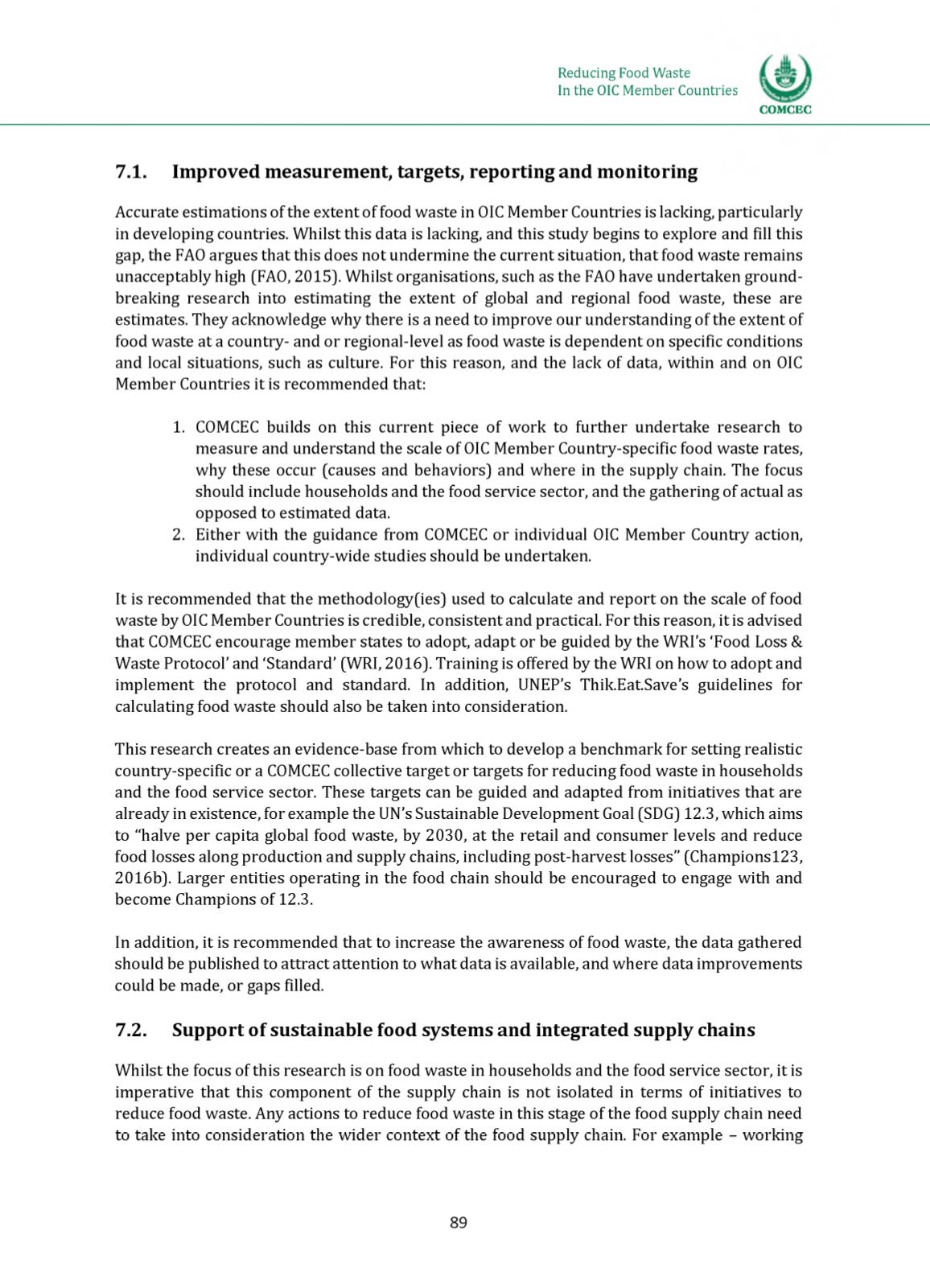

COMCEC
Reducing Food Waste
In the OIC Member Countries
7.1. Im p r o v e d m e a s u r em e n t, ta rge ts , r e p o r t in g a n d m o n it o r in g
Accurate estimations of the extent of food waste in OIC Member Countries is lacking, particularly
in developing countries. Whilst this data is lacking, and this study begins to explore and fill this
gap, the FAO argues that this does not undermine the current situation, that food waste remains
unacceptably high (FAO, 2015). Whilst organisations, such as the FAO have undertaken ground
breaking research into estimating the extent of global and regional food waste, these are
estimates. They acknowledge why there is a need to improve our understanding of the extent of
food waste at a country- and or regional-level as food waste is dependent on specific conditions
and local situations, such as culture. For this reason, and the lack of data, within and on OIC
Member Countries it is recommended that:
1. COMCEC builds on this current piece of work to further undertake research to
measure and understand the scale of OIC Member Country-specific food waste rates,
why these occur (causes and behaviors) and where in the supply chain. The focus
should include households and the food service sector, and the gathering of actual as
opposed to estimated data.
2. Either with the guidance from COMCEC or individual OIC Member Country action,
individual country-wide studies should be undertaken.
It is recommended that the methodology(ies) used to calculate and report on the scale of food
waste by OIC Member Countries is credible, consistent and practical. For this reason, it is advised
that COMCEC encourage member states to adopt, adapt or be guided by the WRI’s ‘Food Loss &
Waste Protocol’ and ‘Standard’ (WRI, 2016). Training is offered by the WRI on how to adopt and
implement the protocol and standard. In addition, UNEP’s Thik.Eat.Save’s guidelines for
calculating food waste should also be taken into consideration.
This research creates an evidence-base from which to develop a benchmark for setting realistic
country-specific or a COMCEC collective target or targets for reducing food waste in households
and the food service sector. These targets can be guided and adapted from initiatives that are
already in existence, for example the UN’s Sustainable Development Goal (SDG) 12.3, which aims
to “halve per capita global food waste, by 2030, at the retail and consumer levels and reduce
food losses along production and supply chains, including post-harvest losses” (Champions123,
2016b). Larger entities operating in the food chain should be encouraged to engage with and
become Champions of 12.3.
In addition, it is recommended that to increase the awareness of food waste, the data gathered
should be published to attract attention to what data is available, and where data improvements
could be made, or gaps filled.
7.2. S u p p o r t o f s u s t a in a b le fo o d sys tem s a n d in te g r a te d s u p p ly c h a in s
Whilst the focus of this research is on food waste in households and the food service sector, it is
imperative that this component of the supply chain is not isolated in terms of initiatives to
reduce food waste. Any actions to reduce food waste in this stage of the food supply chain need
to take into consideration the wider context of the food supply chain. For example - working
89
















